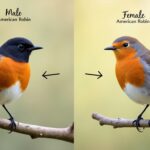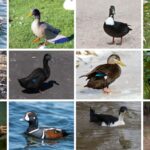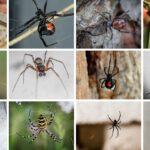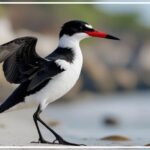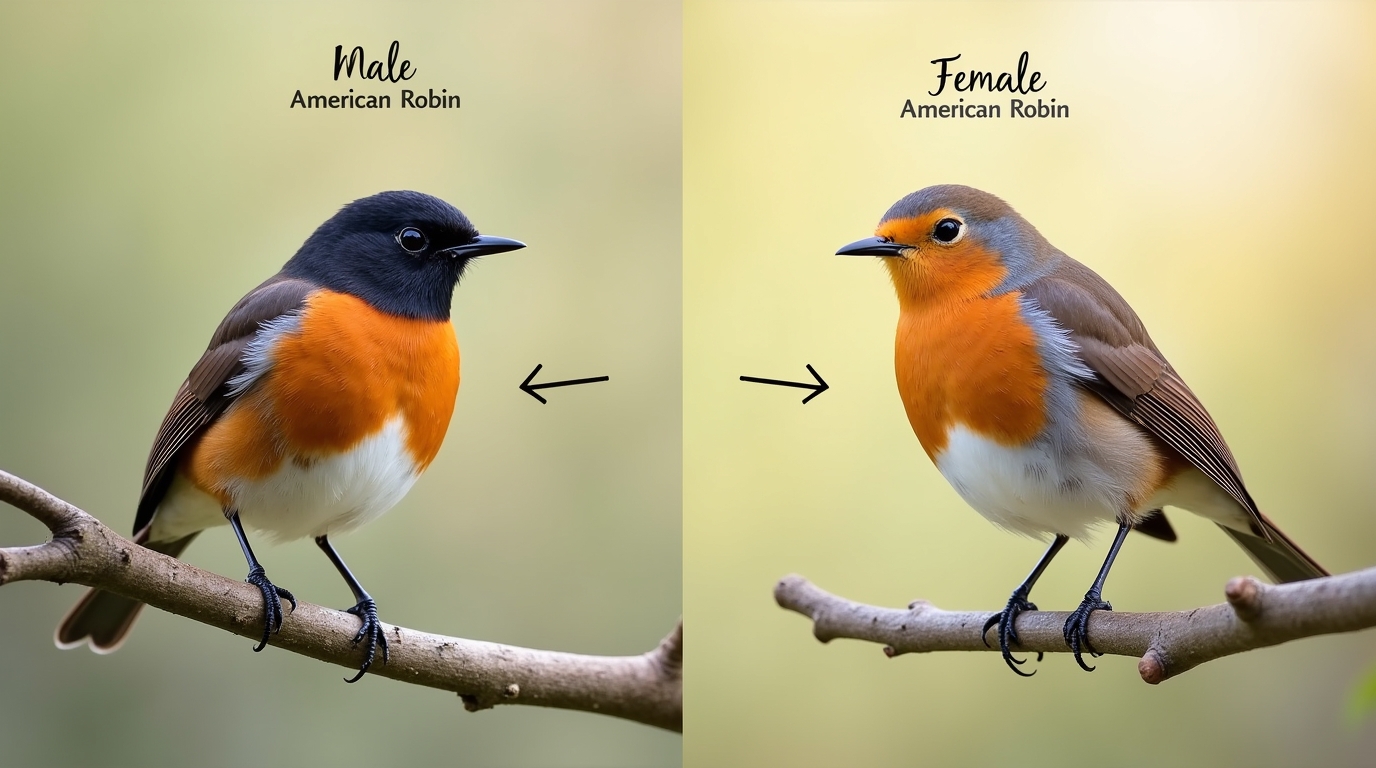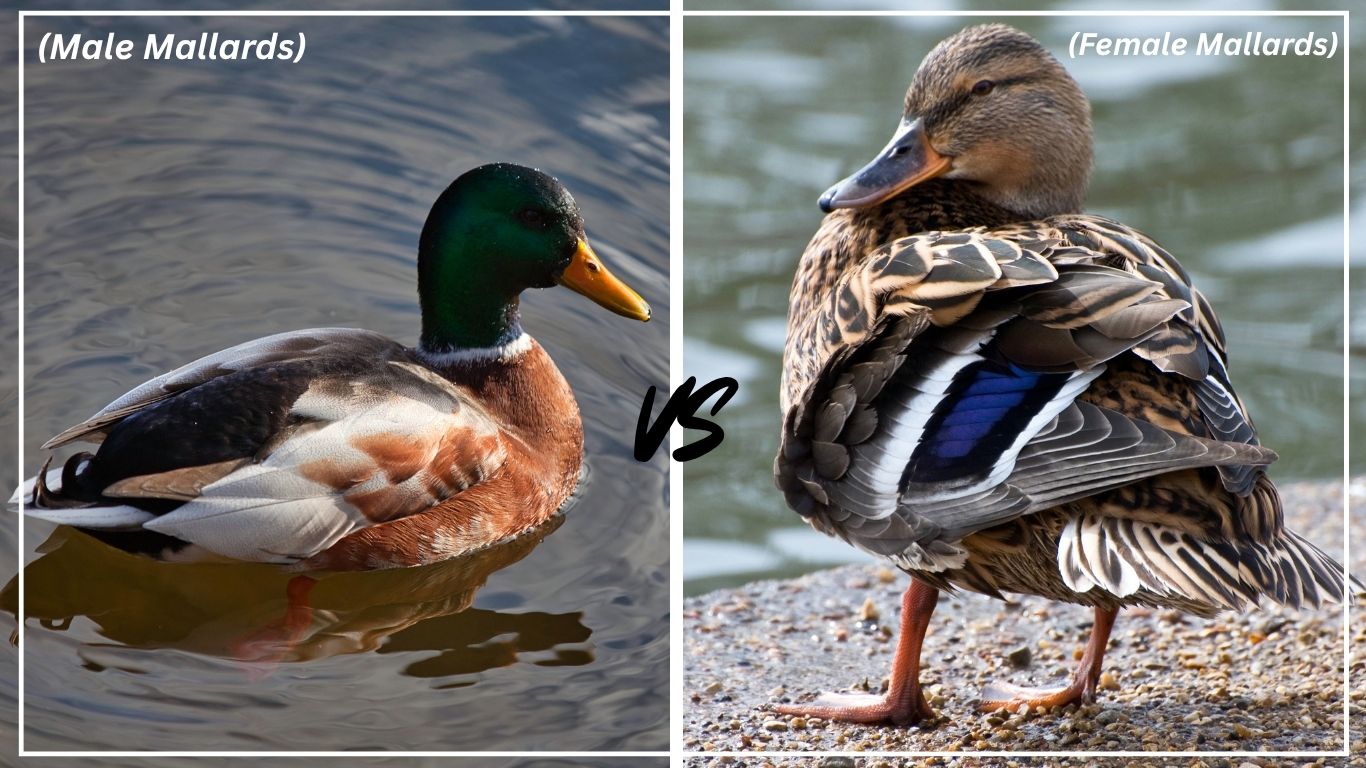White birds with long legs are among the most graceful and captivating creatures found in wetlands, marshes, and coastal regions across the globe. These elegant waders, including egrets, herons, ibises, and storks, are known not only for their striking plumage but also for their slow, deliberate movements and remarkable hunting skills. In this detailed guide, we introduce 14 iconic species, each highlighted with vivid descriptions, identification tips, habitat preferences, feeding habits, and unique behavioral traits. Whether you’re a passionate birdwatcher, a curious nature lover, or a wildlife enthusiast, this article offers a comprehensive look into the lives of these majestic long-legged birds in their natural environments.
1. Great Egret

The Great Egret is a symbol of elegance in wetland environments, admired for its towering height, graceful movements, and pristine white feathers. Standing over three feet tall, this bird is often seen wading silently through marshes and shallow waters, hunting with focused stillness. Its long, S-curved neck and golden spear-like bill give it a regal appearance, while its flight—with slow, steady wingbeats and trailing black legs—adds to its striking silhouette against the sky. During the breeding season, the Great Egret develops long, delicate plumes that cascade down its back, adding an extra flourish to its already majestic frame.
Identification
A tall, snow-white bird with a long neck held in a graceful curve and a sharp yellow bill. Its black legs and feet stand in strong contrast to its white body. During breeding season, adults develop long ornamental plumes and greenish skin around the eyes. Both sexes appear nearly identical in size and coloration.
Habitat
Found in a wide range of wetland environments such as freshwater marshes, swamps, lakeshores, tidal estuaries, and coastal lagoons. Common across North, Central, and parts of South America. Nests are typically built in colonies high in trees over water, offering safety from predators.
Diet
Primarily feeds on small fish but also eats amphibians, reptiles, crustaceans, and aquatic insects. Hunts by slowly stalking through shallow water or standing motionless before striking quickly with its bill. Often forages alone but may gather with other waders in rich feeding grounds.
Behavior
Great Egrets are graceful and deliberate hunters, often seen standing still for long periods. Though they forage alone, they nest communally with other water birds. During courtship, males display their elegant back plumes and perform ritualized stretching displays. In flight, they retract their necks and soar with deep, steady wingbeats.
2. Snowy Egret
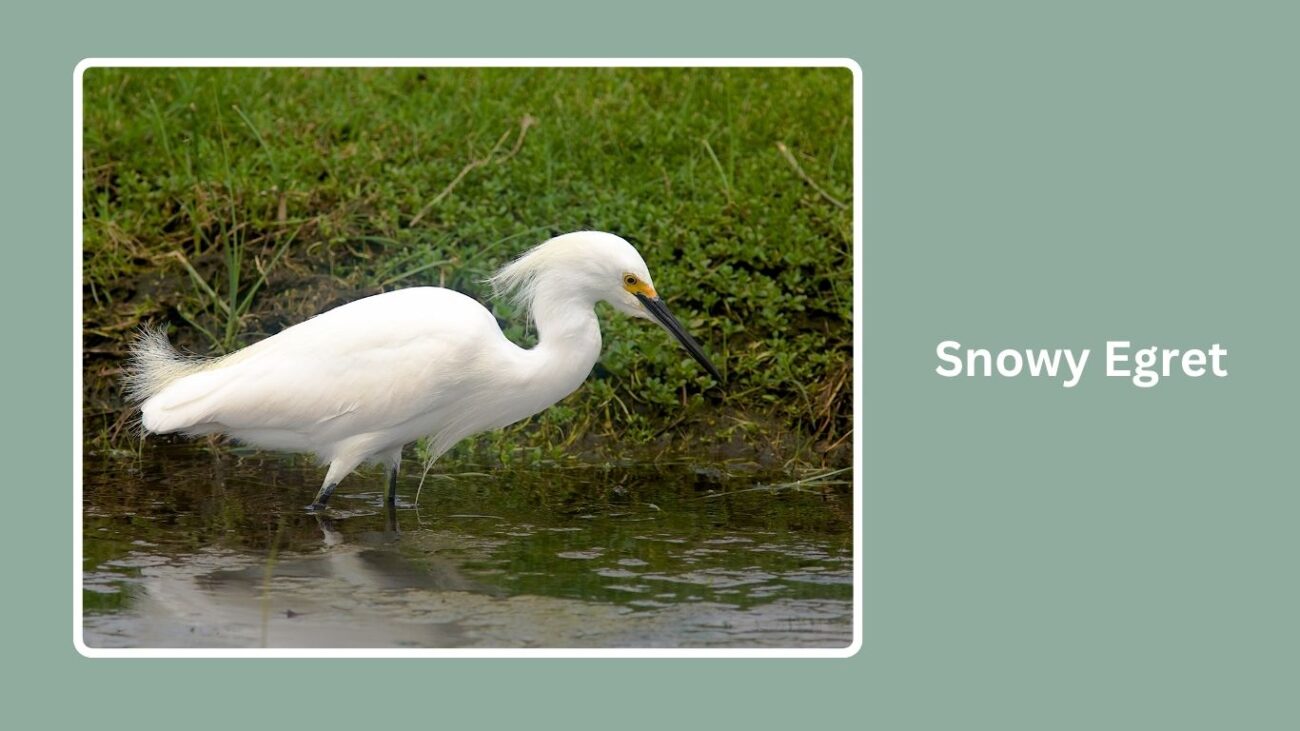
The Snowy Egret is a small, elegant wading bird known for its dazzling white feathers and lively personality. With a slender black bill, striking yellow eyes, and vivid yellow feet that stand out against its black legs, it creates a sharp and beautiful contrast. This bird is often seen actively foraging in shallow waters, dashing or dancing as it stirs up prey with its bright feet. During the breeding season, Snowy Egrets transform into truly spectacular birds, growing flowing plumes on their head, neck, and back, which they use in showy courtship displays. Their beauty and energy make them one of the most admired birds in wetland habitats.
Identification
A medium-sized white egret with a long, thin black bill and long black legs with bright yellow feet, often referred to as “golden slippers.” In breeding season, it grows delicate, lacy plumes on its head, neck, and back. Both males and females look alike. The bird’s alert posture and animated feeding style are also useful identification traits.
Habitat
Snowy Egrets are found in freshwater and saltwater wetlands including marshes, estuaries, tidal flats, swamps, and flooded fields. They are widespread across North and Central America, especially in warm coastal areas. Nests are built in colonies, often in shrubs or trees near water, sometimes alongside other herons and waders.
Diet
Feeds on small fish, shrimp, insects, amphibians, and crustaceans. Actively hunts by stirring the water with its feet, making short runs, or even flapping its wings to flush prey. Their energetic feeding behavior sets them apart from more patient waders.
Behavior
Lively and agile, Snowy Egrets are known for their dynamic foraging style, often seen darting, dancing, or hopping through the shallows. They are social birds, nesting in colonies and often foraging near other waders. During courtship, males perform elegant displays, raising their plumes and calling with soft croaks.
3. Cattle Egret

The Cattle Egret is a unique and charming white bird, easily recognized for its habit of following large grazing animals like cattle, horses, and buffalo. Unlike most egrets that prefer watery habitats, this species is often found in dry fields, meadows, and pastures, where it takes advantage of insects stirred up by moving livestock. Its compact body, shorter neck, and stout yellow bill distinguish it from the taller, more slender egrets. During the breeding season, the Cattle Egret becomes even more eye-catching as it grows warm orange plumes on its head, chest, and back. This adaptable bird has successfully spread across much of the world, thriving in open landscapes and agricultural areas, making it a familiar and beloved sight.
Identification
Medium-sized white egret with a chunky build and short neck. Its bill is thick and yellow, while the legs are yellowish or dull green. During breeding season, it develops soft, buff-orange plumes on the crown, chest, and back. Both males and females look alike, but the vibrant breeding colors make adults especially striking.
Habitat
Unlike other egrets, the Cattle Egret favors open grasslands, fields, and pastures rather than wetlands. It’s commonly seen near grazing animals, sometimes perched directly on cattle backs. Originally native to parts of Asia and Africa, it has spread widely to the Americas, Europe, and Australia, adapting well to agricultural landscapes and suburban parks.
Diet
Primarily feeds on insects such as grasshoppers, crickets, flies, and beetles that are disturbed by the movements of large mammals. Occasionally eats frogs, spiders, and small reptiles. The bird’s close relationship with grazing animals allows it to exploit a unique food source not available to many other waders.
Behavior
Highly social and often seen in groups, the Cattle Egret follows herds for easy feeding opportunities. It tends to forage on dry ground rather than in water, moving energetically and often bobbing its head. Nesting occurs in colonies, typically in trees near water bodies. During courtship, males perform displays that include fluffing their feathers and bill rubbing to attract mates.
4. Whooping Crane
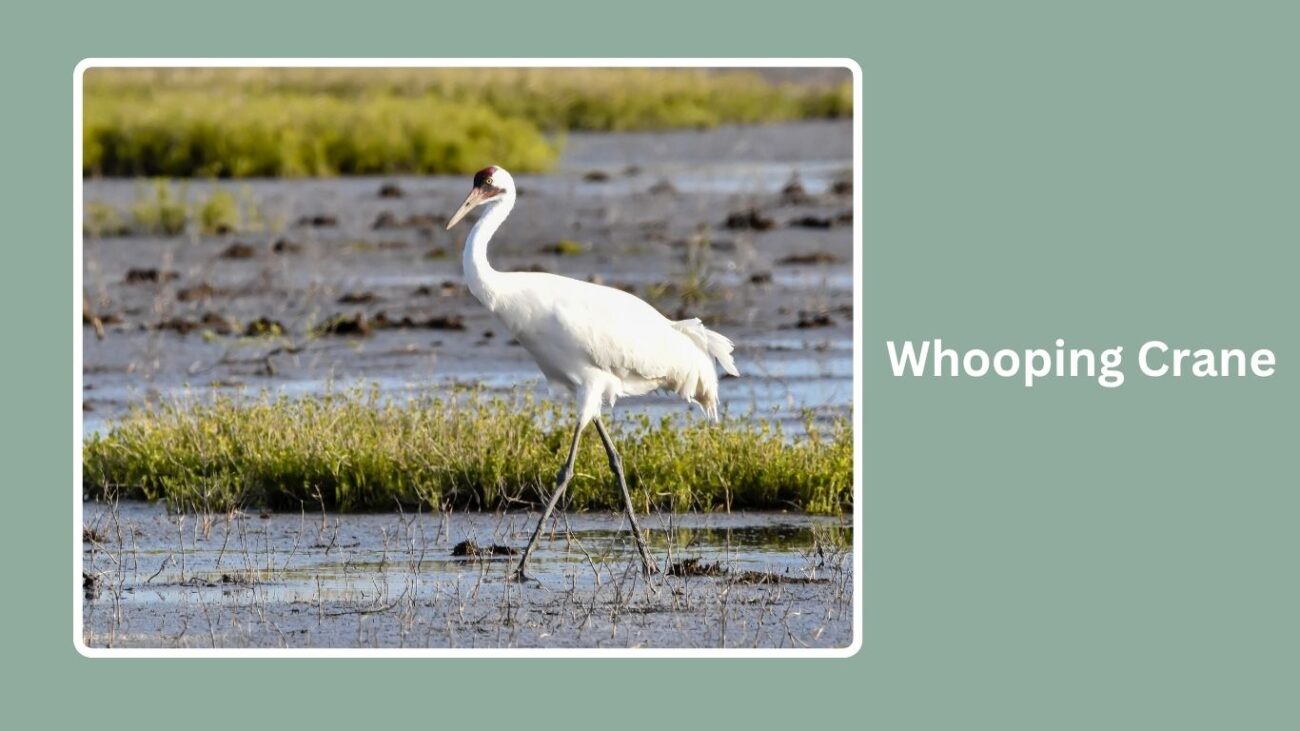
The Whooping Crane is one of North America’s most iconic and endangered white birds, renowned for its towering height and hauntingly beautiful calls. Standing nearly five feet tall, this majestic bird is covered in brilliant white feathers, with black wingtips that become visible during flight. Their long, slender legs and neck contribute to their elegant and stately appearance. Historically, whooping cranes were found in vast wetlands across the continent, but habitat loss and hunting sharply reduced their numbers. Today, they are the focus of extensive conservation efforts, and their slow, deliberate movements in marshes and prairies continue to inspire awe and admiration.
Identification
A very large white crane with a long neck and legs, characterized by striking black wingtips visible in flight. The head is adorned with a bare red crown and a black “mask” around the eyes. Juveniles are grayer with less distinct markings. Both sexes look similar, though males are slightly larger.
Habitat
Whooping Cranes inhabit freshwater marshes, wet meadows, and shallow lakes in the northern U.S. and Canada during summer, migrating to coastal wetlands and estuaries along the Gulf Coast in winter. They require large, undisturbed wetlands for nesting and foraging, often favoring protected wildlife refuges.
Diet
Feeds on a variety of aquatic prey including fish, amphibians, crustaceans, and insects. Also consumes seeds and plant material. Forages by probing in shallow water and mud with its long bill, picking up prey from the surface or just beneath.
Behavior
Known for their slow, graceful movements, whooping cranes often walk deliberately through wetlands. They form strong pair bonds and perform elaborate courtship dances involving bowing, jumping, and wing flapping. They migrate long distances in flocks and are vocal, producing loud, whooping calls that carry over great distances.
5. Little Egret (Egretta garzetta)
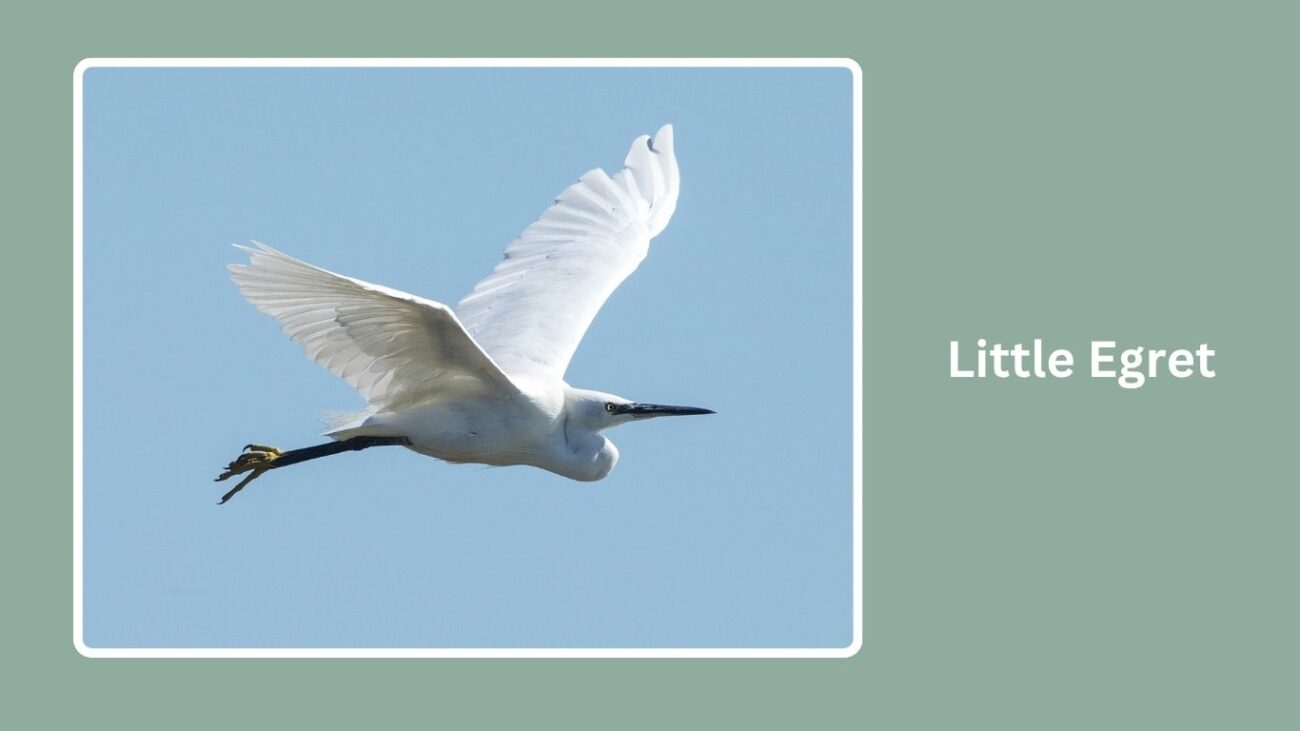
The Little Egret is a small, graceful white heron admired for its delicate stature and agile hunting techniques. Sporting snowy white plumage, slender black legs, and striking yellow feet, this bird presents a sharp contrast that makes it easy to spot in shallow waters. Its thin, pointed black bill is perfectly designed for quick, precise strikes. During the breeding season, the Little Egret displays elegant plumes on its head and back, adding a touch of flair to its refined appearance. Native to parts of Europe, Africa, Asia, and Australia, it thrives in wetlands and coastal habitats, where its lively movements enliven the waterside landscape.
Identification
A small white heron with slender black legs and bright yellow feet, often called “golden slippers.” The thin, sharp black bill is adapted for quick fishing. During breeding, long wispy plumes grow on the head, neck, and back. Both sexes look alike, with no significant size difference.
Habitat
Found in freshwater and coastal wetlands, including marshes, riverbanks, estuaries, and tidal flats. Prefers shallow waters rich in fish and invertebrates. Its range includes Europe, Africa, parts of Asia, and Australia, often nesting in colonies in trees or reed beds near water.
Diet
Feeds on small fish, amphibians, insects, and crustaceans. Uses active hunting techniques, including stalking, foot-trembling, and sometimes wing-flicking to flush out prey. Hunts mostly by sight in shallow water.
Behavior
Highly active and restless, the Little Egret often moves quickly through water while hunting. It is a social species that nests in colonies and may roost communally. Displays include elegant head plumes raised during breeding season and gentle calls used to communicate within colonies.
6. Wood Stork (Mycteria americana)
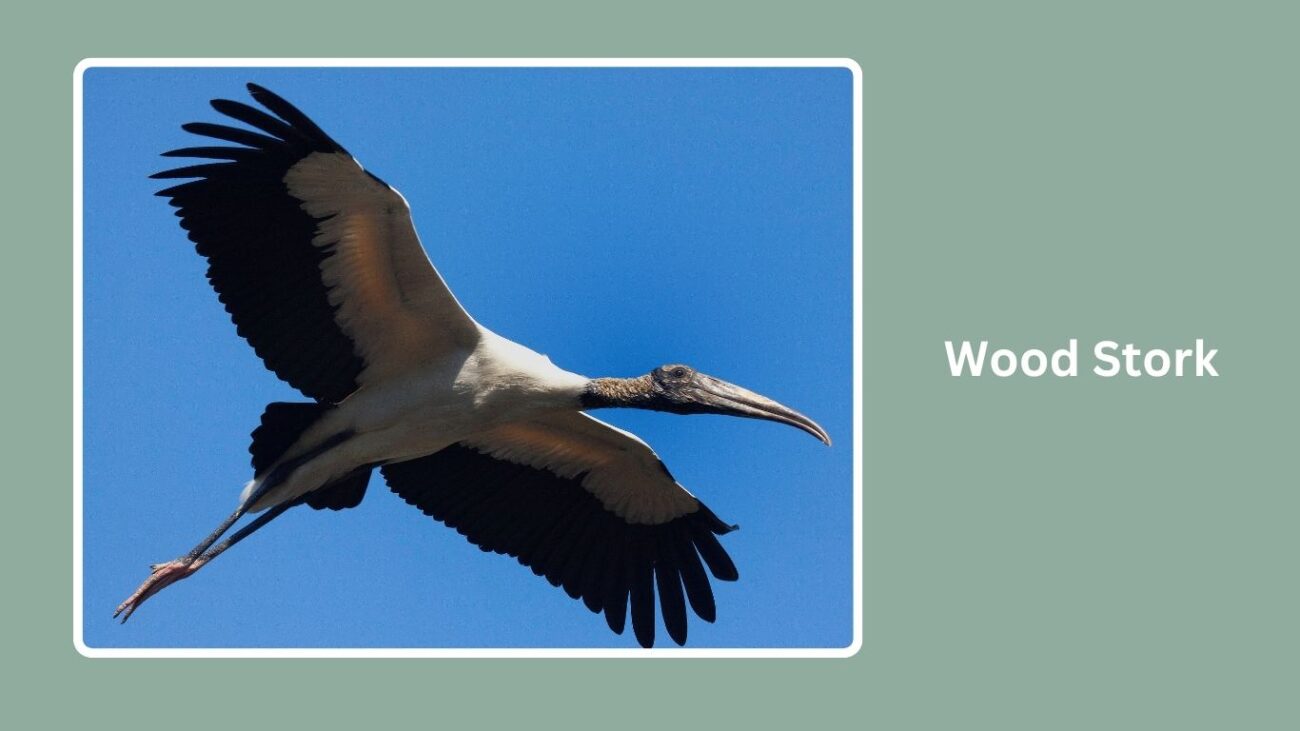
The Wood Stork is a large, striking white bird known for its unique bald head and long, thick bill. Unlike many other white waders, it has a dark, featherless face and neck that contrast sharply with its snowy white body and broad black flight feathers. This stately bird inhabits wetlands in the southeastern United States, Central, and South America, where it forages patiently in shallow waters. Its slow, deliberate hunting style, combined with its distinctive appearance, makes the Wood Stork a fascinating presence in swampy landscapes and coastal marshes.
Identification
Large white stork with a bald, grayish-black head and neck. The body is covered in white feathers, while the flight feathers are black, visible during flight. It has a thick, curved, pale gray bill and long dark legs. Both sexes look alike.
Habitat
Prefers freshwater and brackish wetlands such as swamps, marshes, flooded forests, and mangroves. Common in the southeastern U.S., especially Florida and coastal Georgia, as well as parts of Central and South America. Nests colonially in trees near water.
Diet
Feeds mainly on fish, frogs, and aquatic insects. Forages by wading slowly with an open bill, using tactile feeding to snap up prey stirred by movement. Often hunts in groups, following water fluctuations.
Behavior
Wood Storks are slow, deliberate feeders, using a “groping” technique with their bill submerged to catch prey. They nest in large colonies, often with other wading birds, and engage in ritualized greeting ceremonies. They are generally silent but produce guttural hisses at the nest.
7. American White Ibis (Eudocimus albus)

The American White Ibis is a striking bird well-known for its bright white plumage contrasted with a vivid orange-red bill and legs. This long-legged wader often inhabits coastal wetlands, mudflats, and marshes where it sweeps its curved bill side to side in shallow water to catch small aquatic creatures. With a slender neck and a graceful, arched bill, the ibis is both elegant and highly adapted for foraging in its watery environment. During the breeding season, the bill and legs intensify in color, making the bird even more visually distinctive.
Identification
Medium-sized white wading bird with a long, slender, curved orange-red bill and matching legs. The body is pure white with black tips on the wings visible in flight. Both sexes appear similar, though males are generally larger.
Habitat
Prefers coastal marshes, tidal flats, mangroves, swamps, and freshwater wetlands throughout the southeastern U.S., Central America, and parts of northern South America. Often nests in colonies in trees or shrubs near water.
Diet
Feeds on small fish, crustaceans, aquatic insects, and other invertebrates. Uses its curved bill to probe and sweep through mud or shallow water to locate prey. Often forages in groups, stirring up mud to flush out hidden creatures.
Behavior
American White Ibises are social birds, often seen in large flocks. They are noisy and vocal, especially near nesting colonies. During breeding, males perform display flights and bill clacking to attract mates. They fly with necks outstretched and legs trailing behind.
8. White Stork (Ciconia ciconia)

The White Stork is a large, majestic wading bird known for its striking white plumage contrasted by black wing feathers, long red legs, and a vivid red bill. This iconic bird has long captured human imagination and features prominently in European folklore, especially in tales where it symbolizes luck, fertility, and the arrival of newborns. Found across Europe, western Asia, and parts of North Africa, the White Stork undertakes long-distance migrations to sub-Saharan Africa for the winter. With a commanding presence, it is often seen soaring on thermal currents, wings outstretched in elegant silence. It frequently nests on man-made structures such as rooftops, chimneys, and church towers, often reusing and expanding the same nest year after year. Its adaptability to human-modified landscapes and dramatic migratory patterns make it a favorite among bird enthusiasts.
Identification
A tall and slender bird with a mostly white body, offset by black flight feathers on its expansive wings. It has a long, straight, orange-red bill and long reddish legs. The wingspan ranges from 6 to 7 feet, giving it a powerful yet graceful flight profile. Both males and females are similar in appearance, with subtle size differences. Juveniles have duller bills and legs compared to adults.
Habitat
White Storks prefer open lowland areas such as meadows, pastures, farmlands, and wetlands. They often choose habitats close to water sources where prey is abundant. During breeding, they select tall structures like trees, rooftops, or utility poles for nesting—especially in towns and villages across Europe. In winter, they favor savannas, grasslands, and wetlands in sub-Saharan Africa.
Diet
These birds are opportunistic feeders with a broad diet that includes insects (like grasshoppers and beetles), frogs, lizards, snakes, fish, small mammals, earthworms, and even bird eggs. They forage mostly by walking slowly through fields and marshes, using their sharp bill to probe the soil or grab visible prey.
Behavior
White Storks are social and monogamous, forming strong pair bonds during the breeding season. They are known for their loud, clattering sound produced by rapidly snapping their bills—a key part of their courtship display. Outside of breeding, they migrate in large flocks using thermals to glide over long distances with minimal energy. Nesting sites are often used for many years, with some nests becoming massive over time. Though typically silent, they rely heavily on body language and bill sounds for communication.
9. Siberian Crane (Leucogeranus leucogeranus)
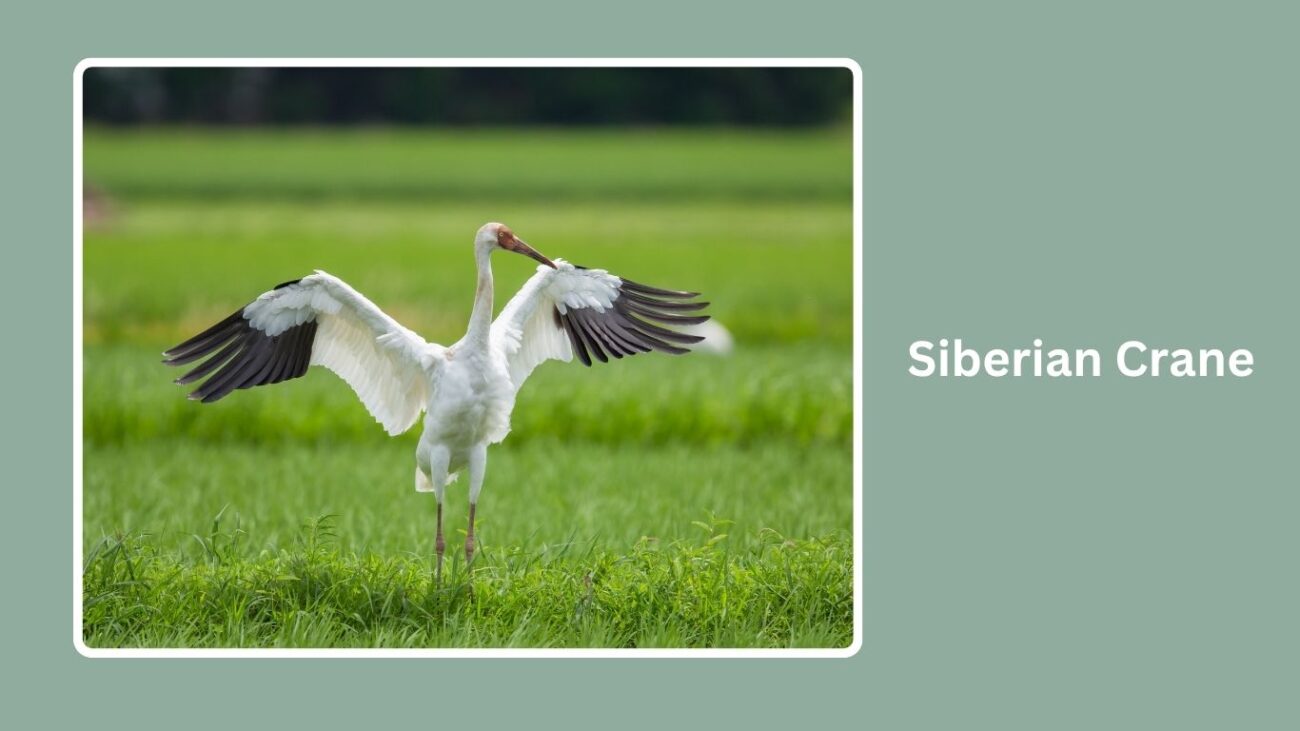
The Siberian Crane is one of the most elegant and critically endangered cranes in the world. Known for its pure white plumage and long, graceful neck, this tall bird stands out against the wetland habitats it frequents. Its long black legs and reddish facial skin give it a striking appearance, especially during the breeding season. The Siberian Crane undertakes one of the longest migrations of any crane species, flying thousands of miles between its Arctic breeding grounds and southern wintering areas in China and Iran. Conservationists closely monitor its dwindling population, with efforts focused on habitat protection and international cooperation across its migratory route. Revered in many cultures and ecosystems, this majestic bird is a symbol of resilience and ecological fragility.
Identification
A tall, snowy-white crane with long black legs and a long, pointed pinkish-red bill. Adults have a bare reddish face that deepens in color during breeding. Wings are pure white except for black primaries visible during flight. Males and females look alike, while juveniles are pale buff with brownish markings.
Habitat
Breeds in remote Arctic tundra wetlands of northeastern Russia, often near shallow lakes and bogs. Winters in freshwater wetlands, rice paddies, and floodplains in parts of China (Poyang Lake Basin) and Iran. Requires large, undisturbed wetlands for both nesting and foraging.
Diet
Feeds primarily on aquatic plants, roots, tubers, and rhizomes. In wintering grounds, it consumes sedges, grasses, and agricultural grains. Occasionally supplements its diet with insects, small vertebrates, and invertebrates found in shallow waters or mudflats.
Behavior
Highly migratory, forming small family groups during migration. Often seen walking slowly through marshes and wetlands, probing the soil with their bills. Pairs are monogamous and perform synchronized dancing displays. Their trumpeting calls are loud, clear, and can carry over great distances. During migration, they follow traditional flyways and rely heavily on stopover sites for rest and feeding.
10. Royal Spoonbill (Platalea regia)
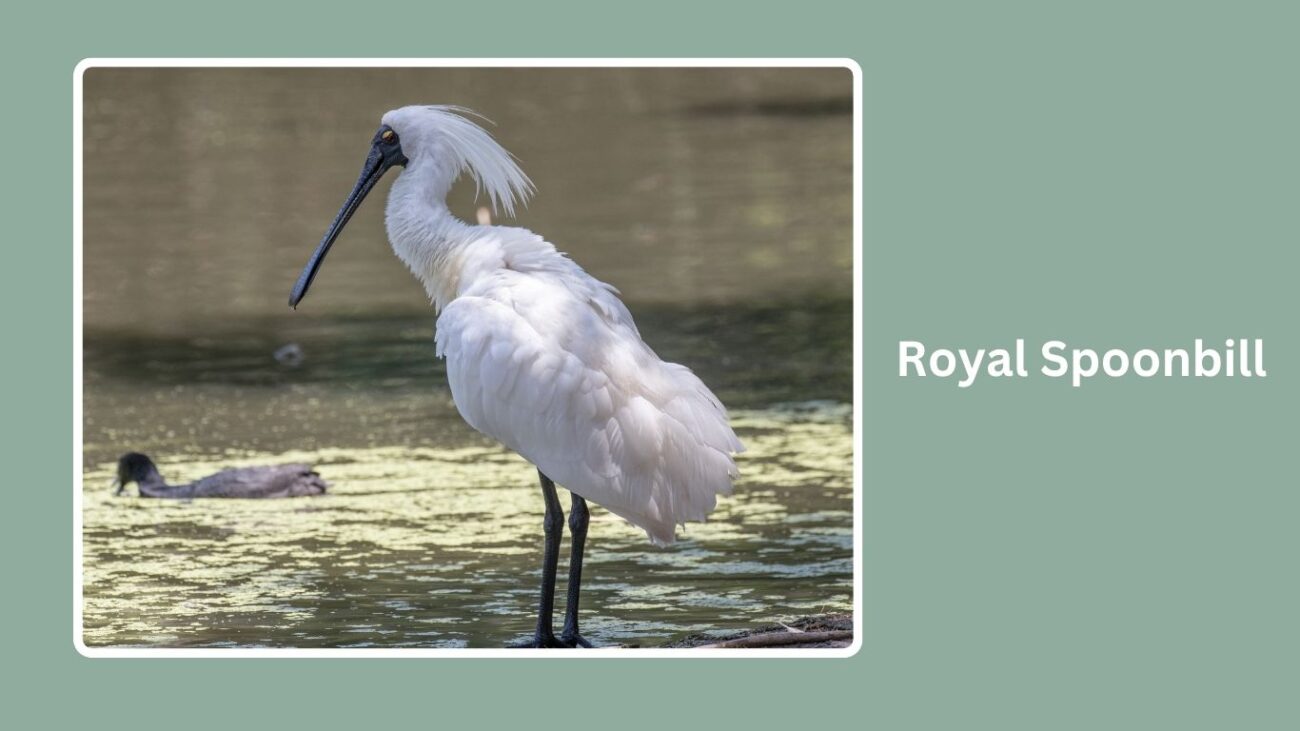
The Royal Spoonbill is a large, stately bird named for its unique spoon-shaped bill and elegant all-white plumage. Easily recognizable by its long, flat, spatula-like black bill, this bird exudes a regal presence in the wetlands and coastal areas of Australia, New Zealand, and parts of Southeast Asia. During the breeding season, adults develop striking features, including long white crest plumes and a yellow patch above the eyes that enhances their striking appearance. Royal Spoonbills are highly social, often seen feeding in groups as they sweep their bills side to side through shallow waters. Their specialized feeding technique and graceful movements make them one of the most fascinating birds to observe in their natural habitat.
Identification
Large white wading bird with a long, black spoon-shaped bill and black legs. In breeding season, adults display long head plumes, a yellow patch above the eyes, and reddish facial skin. Non-breeding birds appear plainer but retain the distinctive bill shape. Males and females are similar in appearance, with males slightly larger.
Habitat
Inhabits shallow freshwater and saltwater wetlands, including lagoons, estuaries, floodplains, and mangroves. Found throughout coastal and inland Australia, as well as parts of New Zealand, Indonesia, and Papua New Guinea. Prefers areas with abundant aquatic life and suitable nesting trees or reed beds.
Diet
Feeds primarily on small aquatic animals such as fish, crustaceans, insects, and mollusks. Forages by sweeping its bill from side to side through water, using tactile sensitivity to detect and snap up prey. Occasionally feeds on plant material and larvae during lean seasons.
Behavior
Highly social, often feeding and nesting in large colonies alongside other waterbirds like ibises and herons. Performs elaborate courtship displays, including head bobbing and wing flapping. Generally silent but may produce low grunts or growls during breeding. Strong fliers that move nomadically in response to water availability, often traveling great distances in search of new wetlands.
11. Eurasian Spoonbill (Platalea leucorodia)
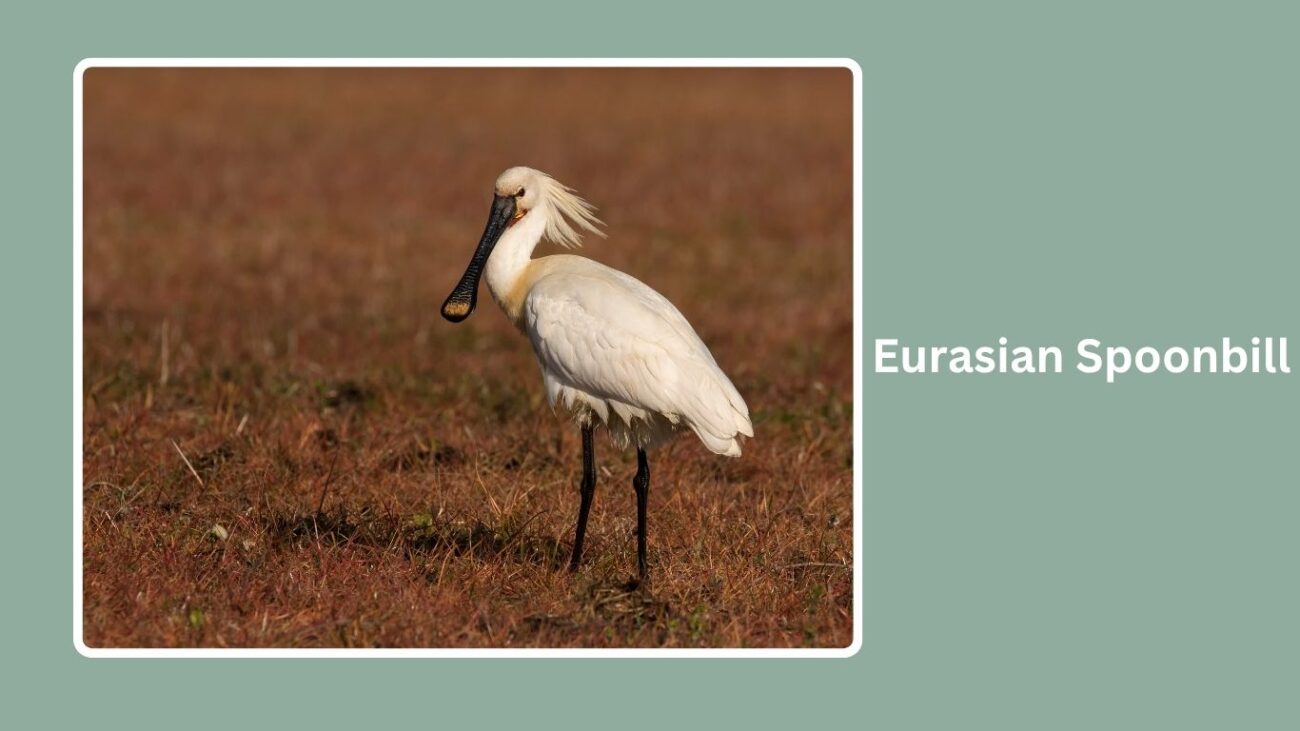
The Eurasian Spoonbill is a tall, graceful wading bird easily recognized by its long, flat spoon-shaped bill and all-white plumage. With a stately presence and slow, deliberate movements, this species inhabits marshes, lakes, and estuarine wetlands across Europe, Asia, and North Africa. During breeding season, adults develop long plumes on the back of the head and a striking yellow breast patch, giving them a distinguished appearance. Unlike herons or storks, spoonbills feed by sweeping their unique bills side-to-side in shallow waters to detect prey by touch. This tactile feeding style is both fascinating and efficient, especially in murky water. The Eurasian Spoonbill is typically silent but highly social, often forming large colonies during nesting. Its elegant form, specialized feeding method, and colonial lifestyle make it a captivating species among white long-legged wading birds.
Identification
Large white bird with a long, spatula-shaped black bill and black legs. Breeding adults display a bushy crest and a yellow patch on the chest. Non-breeding individuals lack these ornamental features. Their bill is a key distinguishing trait from other white waders.
Habitat
Favors shallow freshwater and brackish wetlands such as lakes, floodplains, estuaries, and marshes. Often found near reed beds and mudflats across southern and central Europe, North Africa, and parts of Asia. Requires areas with abundant aquatic prey and isolated nesting sites.
Diet
Feeds on small aquatic animals such as fish, insects, crustaceans, and mollusks. Uses its bill to sweep through water in a side-to-side motion, snapping shut when it detects movement. Occasionally consumes amphibians and aquatic vegetation.
Behavior
Highly social and often seen feeding in groups. Breeds in colonies, sometimes mixed with herons and ibises. Displays include synchronized bill clapping and head movements. Generally quiet but may emit low croaking sounds during nesting. Migratory in northern ranges, sedentary in warmer areas.
12. White-faced Ibis (juvenile or pale morphs) (Plegadis chihi)

While adult White-faced Ibises are known for their shimmering maroon and green plumage, juveniles and some pale morphs display a strikingly lighter appearance that can cause them to be mistaken for entirely different species. Juvenile or pale White-faced Ibises often exhibit grayish-white tones with light brown wings and necks, giving them a softer, more washed-out look. These birds are especially notable for their long, decurved bills and slender legs, which allow them to forage efficiently in muddy or shallow wetlands. Found widely across North and Central America, particularly in the western U.S., they are adaptive and social, usually seen in flocks during migration and breeding. Although less showy than their adult counterparts, the juvenile and pale forms of the White-faced Ibis are elegant and essential parts of wetland ecosystems.
Identification
Juveniles have dusky brown plumage with pale white faces and throats. Lighter morphs can appear buff or grayish overall. Long, curved grayish-pink bill and reddish legs are consistent markers. Adults are iridescent maroon and green with a white border around the face.
Habitat
Found in freshwater and brackish wetlands, including marshes, ponds, irrigated fields, and shallow lakes. Common across the western and central U.S., Mexico, and parts of Central America. Uses reed beds and shrubs for nesting.
Diet
Feeds on insects, small crustaceans, snails, frogs, and aquatic larvae. Uses its curved bill to probe mud and shallow water. Often forages in groups, sometimes mixing with other wading species for safety and efficiency.
Behavior
Gregarious and often seen in flocks during feeding and flight. Breeds colonially in wetlands, building nests over water in low vegetation. Exhibits strong site fidelity. Flight is graceful with steady wingbeats, and their nasal croaking calls are often heard in colonies.
13. Great White Heron
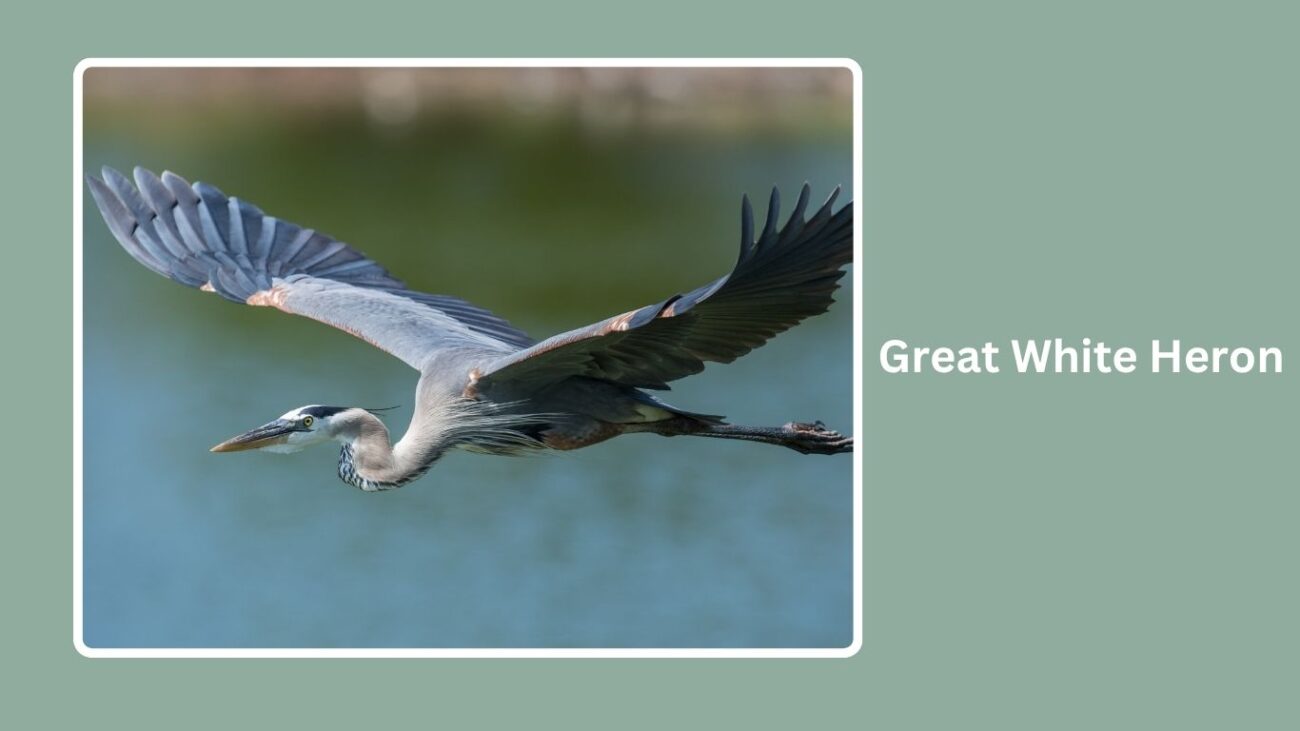
The Great White Heron is a stunning white morph of the Great Blue Heron, found primarily in the coastal regions of southern Florida and the Florida Keys. Although similar in size and shape to its more widely known blue-gray relative, this heron is entirely white, with a massive yellowish bill and long, dark legs. Its regal stature and ghostly white feathers make it a majestic figure in mangroves, saltwater lagoons, and tidal flats. It was once considered a separate species due to its distinct appearance and limited range, but today it’s classified as a subspecies or color morph. The Great White Heron is a solitary hunter, often seen standing motionless in shallow water as it waits to spear fish with lightning-fast precision. It represents a unique adaptation to the coastal environment it calls home.
Identification
A large, all-white heron with a massive, thick yellow bill and dark grayish-black legs. Larger and bulkier than a Great Egret, with a slower, more deliberate movement. Unlike the Snowy Egret, it lacks any black on the bill and has a heavier body.
Habitat
Restricted to southern Florida and the Florida Keys, especially in mangroves, tidal marshes, and coastal estuaries. Prefers saltwater habitats and is rarely found inland. Often nests on mangrove islands and feeds in shallow tidal zones.
Diet
Feeds mainly on fish, but also eats amphibians, crustaceans, and aquatic insects. Hunts by wading slowly through shallow water or standing still before striking prey with its sharp bill. Sometimes forages alone or at the edges of mixed heron groups.
Behavior
Generally solitary, especially when feeding. Territorial during breeding and feeding, but may nest in loose colonies. Exhibits stealthy, patient hunting behavior. Vocalizations are harsh croaks, similar to the Great Blue Heron, especially when disturbed or alarmed.
14. Australian White Ibis (Threskiornis molucca)
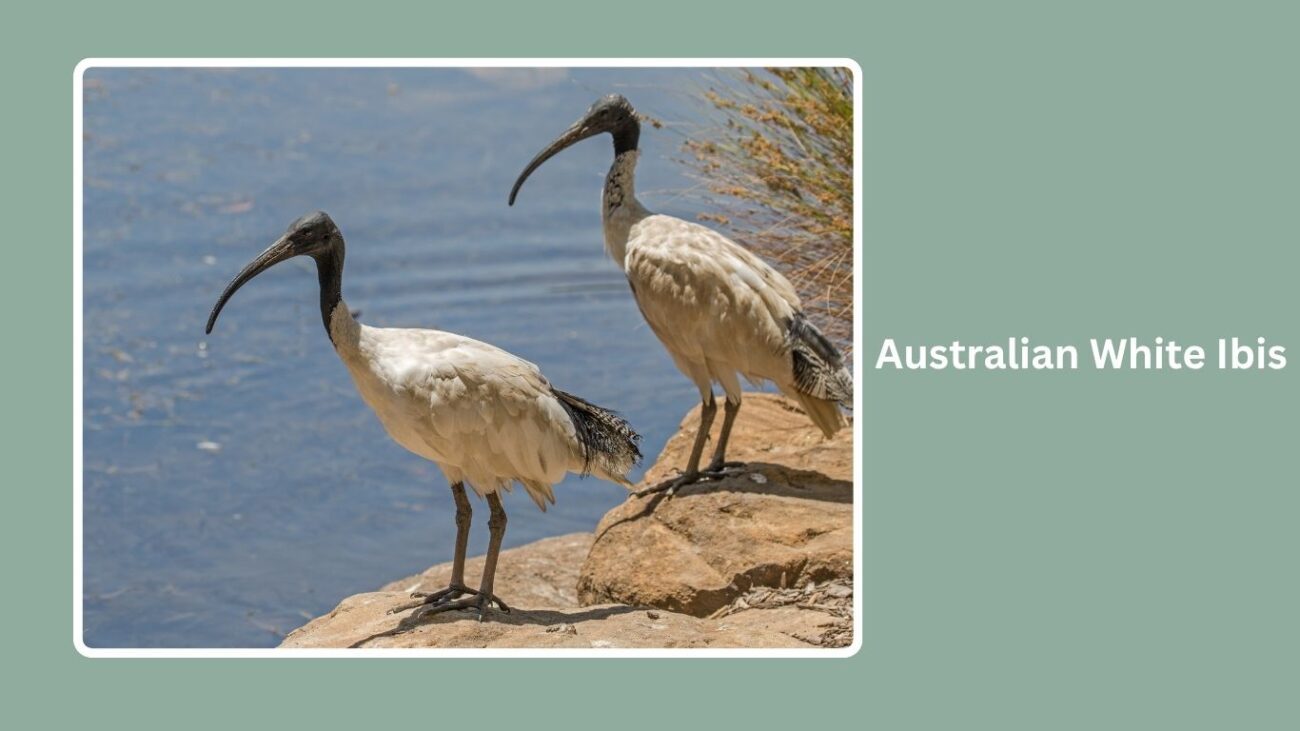
The Australian White Ibis is a large, distinctive bird commonly found in urban parks, wetlands, and coastal regions across Australia. Known colloquially as the “bin chicken” due to its scavenging habits in cities, this ibis stands out with its bright white plumage contrasted by a bald black head and long, down-curved black bill. Despite its reputation for opportunistic feeding, the Australian White Ibis plays an important ecological role in natural wetlands, where it helps control insect populations and clean up organic debris. These adaptable birds have increasingly moved into urban environments, thriving alongside humans while maintaining strong ties to their natural wetland habitats.
Identification
Large white bird with a bare black head and neck, long curved black bill, and long legs. The wings are broad with black tips visible in flight. Juveniles have a mottled brown and white appearance before maturing to full white plumage. Males and females are similar, with males generally larger.
Habitat
Found in a variety of habitats including freshwater wetlands, estuaries, mudflats, and urban parks across much of Australia. Highly adaptable, they thrive in both natural wetlands and human-altered environments like garbage dumps and city parks.
Diet
Omnivorous and opportunistic feeder, eating insects, crustaceans, frogs, small fish, and scraps of human food. Uses its long bill to probe mud and shallow water, often scavenging in urban areas for discarded food waste.
Behavior
Highly social and often seen in large flocks. Known for loud, harsh calls and distinctive waddling gait. Breeds colonially in wetlands, building nests in trees or shrubs. Despite their urban presence, they still rely on natural habitats for breeding and roosting.
Summary
White birds with long legs are elegant waders found in wetlands worldwide. Their striking white plumage, combined with long legs and sharp bills, makes them masters of hunting fish, insects, and small aquatic creatures. These birds, including egrets, herons, and ibises, display diverse behaviors from patient stalking to energetic foot-stirring. Adapted to varied habitats like marshes, estuaries, and grasslands, they play vital roles in their ecosystems and captivate birdwatchers with their graceful presence.

